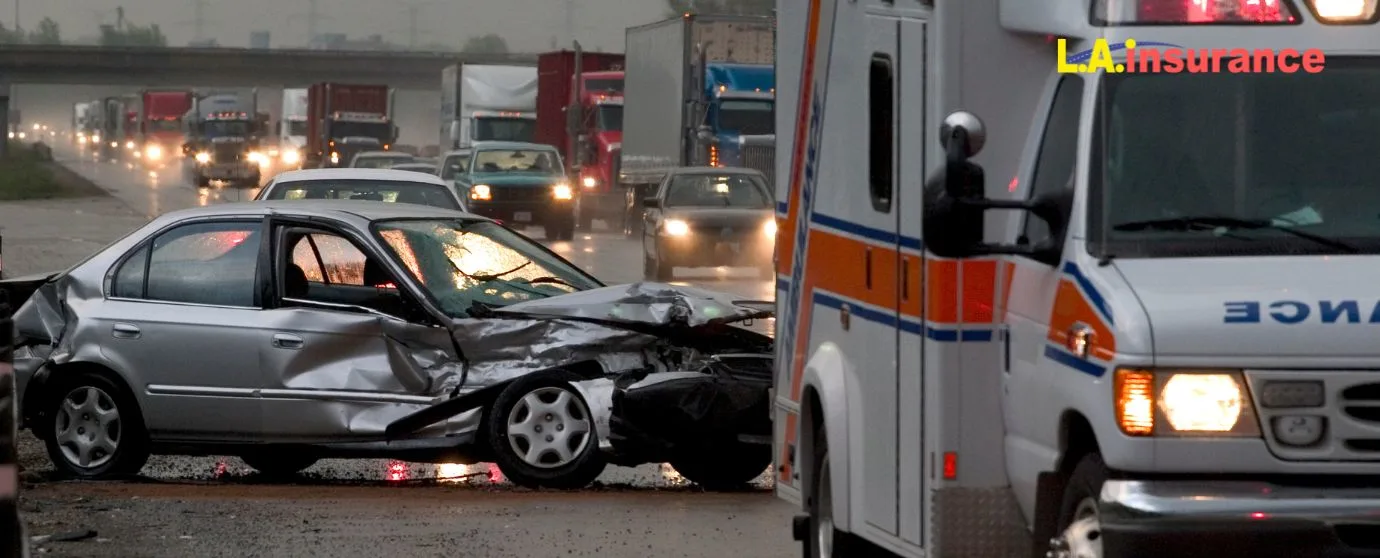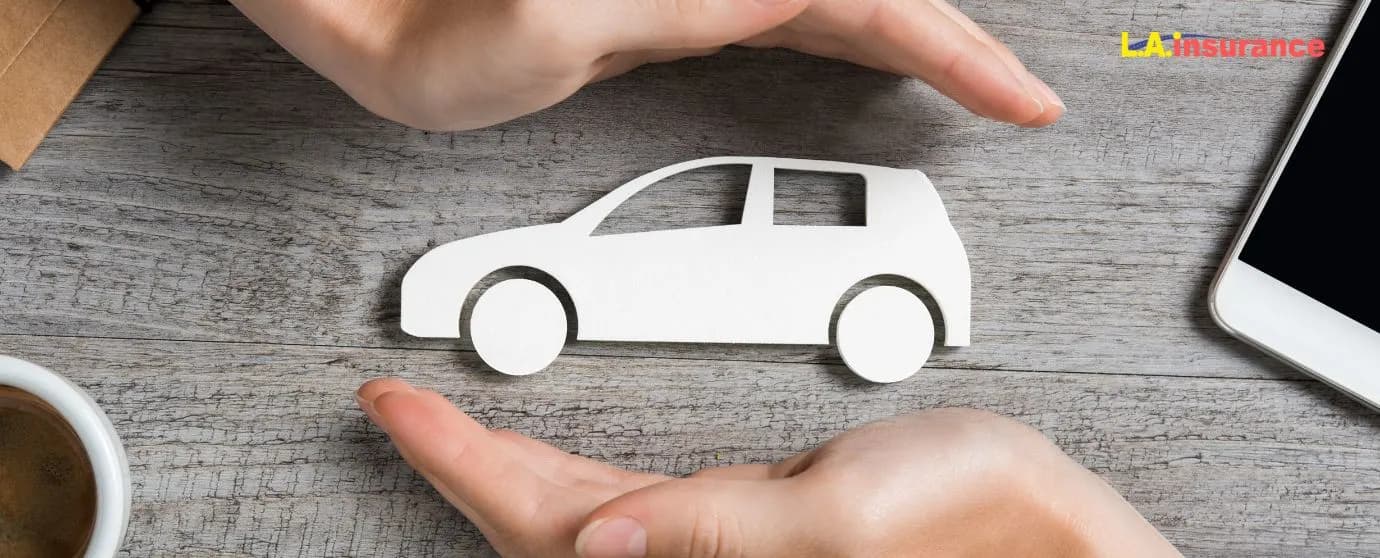
Publish Date: 17-06-2025
Auto Insurance
Last Updated: 19-06-2025
Do I Need Gap Insurance If I Have Full Coverage?
It's not mandatory to have gap insurance if you have full coverage. However, if your car is leased or financed, lenders may recommend carrying gap insurance along with a full coverage policy. A full coverage policy is usually required by lenders, and having gap insurance with it is considered the wisest decision.
Continue reading this article to find out whether you need gap insurance if you have full coverage. We’ll explain gap insurance and full coverage insurance policies, and how they help. Then, we'll answer your question in detail about keeping gap insurance with a full coverage policy.
What Is Gap Insurance and Full Coverage Insurance?
When you finance or lease a vehicle, its value drops fast. But your loan remains the same. That’s where gap insurance (Guaranteed Asset Protection) comes in. It covers the difference between your vehicle’s actual worth and what you still owe. If your car is totaled in an accident, stolen, or if it’s damaged that cannot be repaired, gap insurance makes sure you don’t pay out of pocket.
On the flip side, full coverage insurance is usually optional. However, for financed or leased vehicles, most lenders make it obligatory to carry. They do this to protect their investment because full coverage provides substantial protection. In case your car is stolen and never recovered or if it’s damaged in an accident, collision with an animal or any stationary object, fire, vandalism, or natural disasters (e.g., flood, storm, hail), this policy will cover the repair or replacement of your vehicle. Also, if your car gets totaled after a severe collision or accident, you'll receive full reimbursement equal to its current market value under a full coverage policy.
Please note that full coverage is no official insurance term. It’s a combination of the types of car insurance coverage:
- Liability auto insurance: Pays for damages (bodily injury and property damage) you cause to other drivers in an accident.
- Collision insurance: Covers your own vehicle if it’s damaged in an accident or collision with a stationary object.
- Comprehensive car insurance: Pays for damages if your car is stolen, damaged or totals by an animal, natural hazards (storms, fire, flood), or vandals.
Learn More: What is full coverage car insurance
Difference Between Gap Insurance and Full Coverage Insurance
Gap insurance is an insurance add-on, which many lienholders recommend to carry with a full coverage policy. Full coverage insurance, on the other hand, includes collision coverage, comprehensive coverage, and liability insurance. The following table shows the key differences between gap insurance and full coverage auto policy, so you can understand better whether you need gap insurance with full coverage auto insurance.
Feature | Gap Insurance | Full Coverage Insurance |
What it covers | Covers the difference between your loan balance and your car’s value. | Covers vehicle damage, theft, vandalism, natural disasters, and accident-related expenses |
Pays for repairs? | No, it only covers the loan gap. | Yes, it pays for repair or replacement. |
Required by law? | No, but lenders may require it. | Yes, at least liability insurance is required in most states. |
Protects Against Depreciation? | Yes, covers the loss due to depreciation. | No, only pays based on the car’s actual cash value (ACV) |
When It’s Used | When your car is totaled or stolen, and the insurance payout is lower than your loan balance. | Used for collision coverage, comprehensive coverage, and liability claims. |
Who Should Get It? | Anyone with a new car, long-term loan, high-depreciation vehicles, low down payments, high car insurance cost. | All vehicle owners should carry at least liability insurance and get full coverage if the car is leased or financed. |
Cost | On average $7.50 but varies around $2 to $20 per month depending on provider. | Varies based on your location, vehicle type, state laws, driving record and other factors. On average, the cost is $175 per month. |
Also Read: Liability Insurance Vs. Full Coverage Auto Insurance
Do I Need Gap Insurance If I Have Full Coverage?
The shortest answer is yes. You need gap insurance with a full coverage policy, especially when financing your car with a minimal upfront payment. In fact, many lenders require you to carry gap insurance if you are financing at least 80% to 90% of the vehicle’s value, according to the LegalClarity Organization. However, like full coverage, gap insurance isn’t mandated by lenders in most cases. Nonetheless, insurance experts and loan officers may recommend gap insurance based on your financial status and ability to pay off your remaining loan if the car gets totaled.
Example of Why You Need Gap Insurance with Full Coverage
Everyone doesn’t need gap insurance, however, in some situations, it’s a smart investment. Let’s say you buy a brand-new BMW 7 Series for $100,000 with a loan. According to Investopedia, this vehicle loses 72.6% of its value in five years. After one year, it depreciates to around $60,000. Unfortunately, at this point, a severe accident damages your car, and it is declared a total loss. In such a case, even if you have a full coverage auto insurance policy, it will only pay the actual cash value (ACV), which is $60,000 (minus your deductible).
However, you still owe $80,000 on your loan. That leaves you with a $20,000 gap to cover. In this circumstance, if you have gap insurance along with a full coverage policy, you don’t have to pay a dime out of pocket to pay off your loan. Your insurance agency will cover this difference and prevent you from a surprising financial loss.
When Do You Need Gap Insurance If You Have Full Coverage
Consider gap insurance if any of these situations apply to you:
- You made a low-down payment. If you paid less than 20% upfront, your loan balance could exceed your car’s value for years.
- Your car depreciates quickly. Some vehicles, like luxury models, lose value fast. This can leave a big gap between what you owe and what your car is worth.
- Your loan term is long. A loan of 60 months or more can slow your equity growth (value of your ownership) and leave you upside down on your car insurance policy for a long time.
- You rolled over a previous loan. If you included unpaid debt from another vehicle, you might owe more than your current car is worth.
- Your lender requires it. Some lease agreements and auto loans mandate gap insurance as a part of your insurance coverage.
- You couldn’t afford the difference if your car is totaled. If your vehicle is declared a total loss and you can’t cover thousands in leftover loan payments, you should reconsider before taking out a gap insurance.
- Your zip code indicates higher risk and car insurance rates. Your local risk factors, such as extreme weather, a high theft rate, and accident rates, can increase the chance of a total loss. If that is the case, you should consider adding a gap insurance to your full coverage insurance.
Learn more: Can you cancel gap insurance?
How Much Does Gap Insurance Cost?
The cost of gap insurance depends on where you buy it and your auto insurance policy. On average, adding gap insurance to your full coverage car insurance policy will cost you $7.50 per month or $90 per year. However, this rate can vary between $2 to $20 per month. If you purchase it from dealerships and lenders, they will charge you a one-time fee, ranging from $500 to $1,500.
Cost can vary based on providers. You can buy gap insurance from the following providers:
- Through car insurance companies (costs usually $2 to $10 per month)
- From your car dealership (Costs $500 to $1,500 as a one-time fee)
- Via your lender (Charge a flat fee around $500 to $700)
Apart from providers, gap insurance rates can significantly vary based on several factors such as loan amount, your vehicle’s value, your location (zip code). For instance, the higher the loan amount, the higher the costs.
Related Articles About Gap Insurance Cost:
Should I Have Both Gap Insurance and Full Coverage Insurance?
As has been said, if you finance a vehicle, lenders require full coverage insurance. However, gap insurance is optional unless your lender specifically mandates it. Still, having both auto insurance coverage can be a good investment for you, particularly if your loan balance is higher than the car’s actual worth.
Full coverage pays for the repair or replacement of your financed vehicle if it's damaged in any collision or non-collision incident. Gap insurance is crucial when the damage is so severe that your vehicle is declared a total loss and can't be replaced or repaired. In such cases, gap insurance helps you cover the remaining loan balance on a vehicle you no longer own. So, yes, although you may not be mandatorily required to have both gap insurance and full coverage insurance, keeping it both can be worth investing for many drivers.
Also Learn: Do you need full coverage car insurance on a financed car?
Pros and Cons of Getting Both Gap Insurance and Full Coverage Policy
Let’s look at some pros and cons of having both gap insurance and full coverage.
Pros:
- If your vehicle is totaled, gap insurance covers the difference between the loan balance and the insurance payout.
- Certain auto loans and lease agreements mandate both gap insurance and full coverage, which means you can comply with the lender’s requirements.
- When you have full coverage and gap insurance, you'll be protected from accidents, theft, vandalism, collisions, natural disasters, and property damage. In the event of severe damage or total loss, gap insurance will prevent you from having to pay off your loan out of pocket.
- If you buy gap insurance through your insurance agency and add it to your existing full coverage policy, it is often much cheaper than getting it from a dealership.
Cons:
- Adding gap insurance to your full coverage auto policy increases your car insurance costs.
- If your loan is lower than your vehicle’s value, you may not benefit from gap insurance.
- Gap insurance doesn’t cover damages, personal injury, or roadside assistance. It only helps with the auto loan in event of a total loss.IfHave
Full Coverage Do I Need Gap Insurance: Final Takeaways
- It’s not always mandatory to have gap insurance if you have full coverage, but some lenders require it as part of their auto insurance policy, especially for long-term loans.
- If your car is leased or financed with a low-down payment, you should maintain gap insurance.
- In fact, it’s recommended to include gap insurance if you’re financing 80% to 90% of the vehicle’s value.
- Full coverage insurance covers accidents, theft, animal collisions, natural disasters, and property damage, but does not cover the difference between your loan and vehicle’s value.
- Gap insurance is essential if your loan balance is higher than your vehicle’s actual cash value (ACV).
- On average, gap insurance costs around $7.50 per month or $90 per year.
- Buying gap insurance from an insurance agency is usually cheaper than purchasing it through a car dealership or lender.
- If the remaining loan balance is insignificant and if you think you can afford it in the event of a total loss, you don’t need to carry gap insurance.
- If your auto insurance policy covers the full loan balance, gap insurance isn’t necessary.
- High-depreciation vehicles, like luxury cars, usually benefit most from gap insurance.
Do you need gap insurance along with affordable full coverage auto insurance? Talk to our agent today.
Frequently Asked Questions (FAQs)
If I have a gap insurance, do I need full coverage?
Yes. Gap insurance only covers the loan balance if your vehicle is totaled. You still need full coverage insurance for collision related coverage, comprehensive coverage, and liability insurance to protect against accidents, theft, and property damage.
What are the benefits of getting a gap insurance with a full coverage policy?
It prevents you from owing money if your vehicle is totaled or stolen. Full coverage insurance covers repairs, while gap insurance covers the difference between your loan balance and your car’s value.
What are the cons of gap insurance?
It adds extra expense to your auto insurance policy. If your vehicle doesn’t depreciate quickly or your loan is low, it may be unnecessary. Plus, it doesn’t cover damages, injuries, or roadside assistance.
How much is gap insurance per month?
When purchased through an insurance agency, it typically costs $7.50 per month. But this can range between $2 and $20 per month. However, buying it from a dealership can cost $500 to $1500 as a one-time fee.
How much does it cost for gap insurance and full auto coverage insurance?
The total cost depends on your zip code, vehicle, and insurance agency. The national average for full coverage insurance costs is $175 per month or $2,100 per year. And adding gap insurance can increase your full coverage car insurance cost by $2 to $20 per month.
Tag :
Auto insurance








